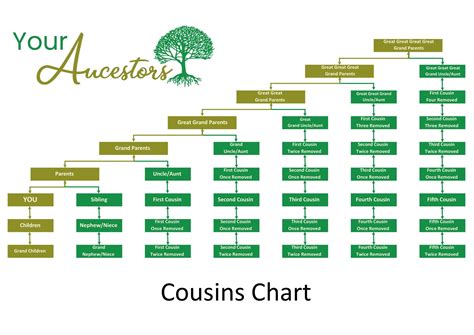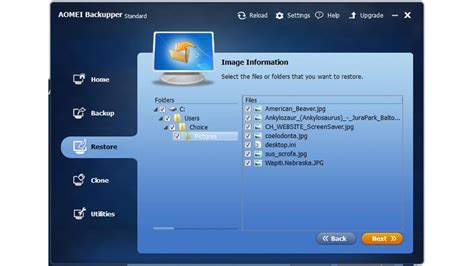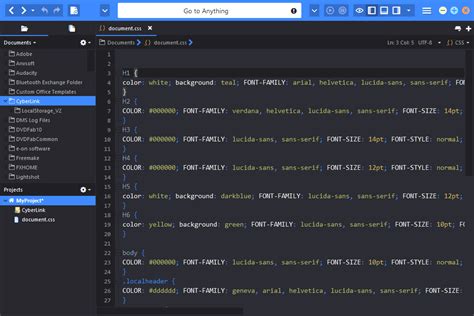Download mysql installer
Author: l | 2025-04-24

To download the MySQL installer, Learn how to download install MySQL on Windows 11. We will install MySQL Server, MySQL Sheel and MySQL Workbench. To download the

MySQL :: Download MySQL Installer - ServerGuy.com
The world's most popular open source database General Availability (GA) Releases Archives MySQL Installer 8.0.41 Note: MySQL 8.0 is the final series with MySQL Installer. As of MySQL 8.1, use a MySQL product's MSI or Zip archive for installation. MySQL Server 8.1 and higher also bundle MySQL Configurator, a tool that helps configure MySQL Server. Select Version: Select Operating System: Windows (x86, 32-bit), MSI Installer 8.0.41 2.1M Download (mysql-installer-web-community-8.0.41.0.msi) MD5: 22ed92c892160254fbf0f93d811360c2 | Signature Windows (x86, 32-bit), MSI Installer 8.0.41 352.2M Download (mysql-installer-community-8.0.41.0.msi) MD5: c2e89b80cf89c2214e5ecb9f91b77f10 | Signature MySQL Installer provides an easy to use, wizard-based installation experience for all your MySQL software needs. MySQL 5.7 - 8.0 installers includes the latest of versions of: MySQL Server MySQL Router MySQL Shell MySQL Workbench and sample models Sample Databases Documentation Choosing the right file: If you have an online connection while running the MySQL Installer, choose the mysql-installer-web-community file. If you do NOT have an online connection while running the MySQL Installer, choose the mysql-installer-community file.Note: MySQL Installer is 32 bit, but will install both 32 bit and 64 bit binaries.Online Documentation MySQL Installer Documentation and Change History Note:MySQL 8.0 is the final series with MySQL Installer. As of MySQL 8.1, use a MySQL product's MSI or Zip archive for installation. MySQL Server 8.1 and higher also bundle MySQL Configurator, a tool that helps configure MySQL Server. Please report any bugs or inconsistencies you observe to our Bugs Database.Thank you for your support!
MySQL Tutorial: Download and Install MySQL
The following set operations to proceed: Back – Return to the previous step. This action enables you to select a different the setup type. Execute – Have MySQL Installer attempt to download and install the required software for all items without a manual status. Manual requirements are resolved by you and verified by clicking Check. Next – Do not execute the request to apply the requirements automatically and proceed to the installation without including the products that fail the check requirements step. Cancel – Stop the installation of MySQL products. Because MySQL Installer is already installed, the initial setup begins again when you open MySQL Installer from the Start menu and click Add from the dashboard. For a description of the available management operations, see Product Catalog.MySQL Installer Configuration Files All MySQL Installer files are located within the C:\Program Files (x86) and C:\ProgramData folders. The following table describes the files and folders that define MySQL Installer as a standalone application.Note Installed MySQL products are neither altered nor removed when you update or uninstall MySQL Installer.Table 2.5 MySQL Installer Configuration Files File or Folder Description Folder Hierarchy MySQL Installer for Windows This folder contains all of the files needed to run MySQL Installer and MySQLInstallerConsole.exe, a command-line program with similar functionality. C:\Program Files (x86) Templates The Templates folder has one file for each version of MySQL server. Template files contain keys and formulas to calculate some values dynamically. C:\ProgramData\MySQL\MySQL Installer for Windows\Manifest package-rules.xml This file contains the prerequisites for every product to be installed. C:\ProgramData\MySQL\MySQL Installer for Windows\Manifest products.xml The products file (or product catalog) contains a list of all products available for download. C:\ProgramData\MySQL\MySQL Installer for Windows\Manifest Product Cache The Product Cache folder contains all standalone .msi files bundled with the full package or downloaded afterward. C:\ProgramData\MySQL\MySQL Installer for WindowsMySQL :: Mysql not installed to
Downloads, click on MySQL Installer for Windows because we want it for Windows 10.How to Install MySQL on Windows 10 – fig – 3After that, you will find two download buttons for the MySQL Installer. The first one is the web Installer, and the second one is the one we will download to our system.There you can see the version of the MySQL Installer is 8.0.28 while I was writing this post, and it may differ when you will read this article. The Installer is for a 32-bit operating system, but you don’t need to worry about that because it works for both 32-bit and 64-bit operating systems.How to Install MySQL on Windows 10 – fig – 4After clicking on the download button, it will ask to login or sign-up for the Oracle web account. You can login or sign-up for the account if you wish to otherwise if you are only concerned about downloading the file, then click on the link No thanks, just start my download as shown in the figure below.How to Install MySQL on Windows 10 – fig – 5The file will start to download. Wait till it finishes.Installing MySQL Installer (Step 2)After you have downloaded the file, locate the file’s location in your system and then double click on it to start the installation process.After the installation starts, it will ask you to choose the setup type, and I will select the custom installation, as you can see in the figure below and then click. To download the MySQL installer, Learn how to download install MySQL on Windows 11. We will install MySQL Server, MySQL Sheel and MySQL Workbench. To download theMySQL :: MySQL Installation Guide :: 3 Installing MySQL on
Been met. Provides the following set operations to proceed: Back – Return to the previous step. This action enables you to select a different the setup type. Execute – Have MySQL Installer attempt to download and install the required software for all items without a manual status. Manual requirements are resolved by you and verified by clicking Check. Next – Do not execute the request to apply the requirements automatically and proceed to the installation without including the products that fail the check requirements step. Cancel – Stop the installation of MySQL products. Because MySQL Installer is already installed, the initial setup begins again when you open MySQL Installer from the Start menu and click Add from the dashboard. For a description of the available management operations, see Product Catalog.MySQL Installer Configuration Files All MySQL Installer files are located within the C:\Program Files (x86) and C:\ProgramData folders. The following table describes the files and folders that define MySQL Installer as a standalone application.Note Installed MySQL products are neither altered nor removed when you update or uninstall MySQL Installer.Table 2.1 MySQL Installer Configuration Files File or Folder Description Folder Hierarchy MySQL Installer for Windows This folder contains all of the files needed to run MySQL Installer and MySQLInstallerConsole.exe, a command-line program with similar functionality. C:\Program Files (x86) Templates The Templates folder has one file for each version of MySQL server. Template files contain keys and formulas to calculate some values dynamically. C:\ProgramData\MySQL\MySQL Installer for Windows\Manifest package-rules.xml This file contains the prerequisites for every product to be installed. C:\ProgramData\MySQL\MySQL Installer for Windows\Manifest products.xml The products file (or product catalog) contains a list of all products available for download. C:\ProgramData\MySQL\MySQL Installer for Windows\Manifest Product Cache The Product Cache folder contains all standalone .msi files bundled with the full package or downloaded afterward. C:\ProgramData\MySQL\MySQLMySQL :: MySQL Installation Guide :: 7.5 Installing MySQL on
Installing MySQL on Windows 11 is pretty straightforward. You just need to download the installer, follow the setup wizard, and configure your server. In no time, you’ll have MySQL running on your system.In the next few steps, I’ll guide you on how to get MySQL up and running on your Windows 11 computer. It involves downloading the installer, installing MySQL Server, and configuring it for first-time use. Let’s dive in!Step 1: Download the MySQL InstallerGo to the MySQL official website and download the MySQL installer.Head over to the MySQL website and look for the “Downloads” section. Choose the MySQL Installer for Windows. You can opt for the web installer or the full installer, depending on your internet speed and preference.Step 2: Run the InstallerOpen the downloaded installer file to begin installation.After downloading, locate the installer file in your downloads folder and double-click it. This will initiate the setup wizard.Step 3: Choose Setup TypeSelect the setup type that best suits your needs; typically, the “Developer Default” is a good start.The setup wizard will prompt you to choose a setup type. “Developer Default” is recommended for most users as it includes all the necessary components.Step 4: Install MySQL ServerProceed with the installation by clicking “Execute.”This step will install the MySQL Server along with other necessary components. The wizard will show you the progress and notify you once it’s complete.Step 5: Configure MySQL ServerAfter installation, configure your new MySQL Server instance.You’ll be prompted to configure the MySQL Server. Set the root password, configure networking options, and choose other settings as needed. Make sure to remember the root password!Step 6: Complete InstallationFinish the setup by applying configuration settings and starting the MySQL Server.Once you’ve configured your server, click “Finish” to complete the setup. The MySQL Server should now be up and running on yourMySQL :: MySQL Installation Guide :: 5.3 MySQL Installer for
Hello Friends, welcome to my new tutorial. In this tutorial, we will see how to install MySQL in Windows 10 with the latest MySQL database server version 8.0.28. MySQL is a relational database management system (RDBMS) developed by Oracle, and it is based on structured query language (SQL). MySQL is one of the most widespread Open-Source database system in the world. Some of the websites that use the MySQL database are YouTube, Paypal, Facebook, LinkedIn, Netflix, etc. Now you can imagine how powerful and popular MySQL is.So without further ado, let’s start our tutorial on how to install MySQL on Windows 10 step-by-step with the latest server version 8.0.28.How to Install MySQL in Windows 10 | Server 8.0.28Downloading MySQL Installer 8.0.28(Step 1)Installing MySQL Installer (Step 2)Setting the Path for MySQL Tools (Step 3)Creating Database in MySQL Command Line Client (Step 3)Creating Table inside Database in MySQL (Step 4)Downloading MySQL Installer 8.0.28(Step 1)We need to download the MySQL installer for Windows in the first step.To download the installer, visit the official website of MySQL through this link. www.mysql.comAfter visiting the website, click on the DOWNLOADS menu button, as shown in the image below.How to Install MySQL on Windows 10 – fig – 1After clicking on the DOWNLOADS menu, scroll down the webpage, and you will find a link MySQL Community (GPL) Downloads » . Click on that link to proceed further, as shown in the image below.How to Install MySQL on Windows 10 – fig – 2After reaching there under community. To download the MySQL installer, Learn how to download install MySQL on Windows 11. We will install MySQL Server, MySQL Sheel and MySQL Workbench. To download theComments
The world's most popular open source database General Availability (GA) Releases Archives MySQL Installer 8.0.41 Note: MySQL 8.0 is the final series with MySQL Installer. As of MySQL 8.1, use a MySQL product's MSI or Zip archive for installation. MySQL Server 8.1 and higher also bundle MySQL Configurator, a tool that helps configure MySQL Server. Select Version: Select Operating System: Windows (x86, 32-bit), MSI Installer 8.0.41 2.1M Download (mysql-installer-web-community-8.0.41.0.msi) MD5: 22ed92c892160254fbf0f93d811360c2 | Signature Windows (x86, 32-bit), MSI Installer 8.0.41 352.2M Download (mysql-installer-community-8.0.41.0.msi) MD5: c2e89b80cf89c2214e5ecb9f91b77f10 | Signature MySQL Installer provides an easy to use, wizard-based installation experience for all your MySQL software needs. MySQL 5.7 - 8.0 installers includes the latest of versions of: MySQL Server MySQL Router MySQL Shell MySQL Workbench and sample models Sample Databases Documentation Choosing the right file: If you have an online connection while running the MySQL Installer, choose the mysql-installer-web-community file. If you do NOT have an online connection while running the MySQL Installer, choose the mysql-installer-community file.Note: MySQL Installer is 32 bit, but will install both 32 bit and 64 bit binaries.Online Documentation MySQL Installer Documentation and Change History Note:MySQL 8.0 is the final series with MySQL Installer. As of MySQL 8.1, use a MySQL product's MSI or Zip archive for installation. MySQL Server 8.1 and higher also bundle MySQL Configurator, a tool that helps configure MySQL Server. Please report any bugs or inconsistencies you observe to our Bugs Database.Thank you for your support!
2025-04-19The following set operations to proceed: Back – Return to the previous step. This action enables you to select a different the setup type. Execute – Have MySQL Installer attempt to download and install the required software for all items without a manual status. Manual requirements are resolved by you and verified by clicking Check. Next – Do not execute the request to apply the requirements automatically and proceed to the installation without including the products that fail the check requirements step. Cancel – Stop the installation of MySQL products. Because MySQL Installer is already installed, the initial setup begins again when you open MySQL Installer from the Start menu and click Add from the dashboard. For a description of the available management operations, see Product Catalog.MySQL Installer Configuration Files All MySQL Installer files are located within the C:\Program Files (x86) and C:\ProgramData folders. The following table describes the files and folders that define MySQL Installer as a standalone application.Note Installed MySQL products are neither altered nor removed when you update or uninstall MySQL Installer.Table 2.5 MySQL Installer Configuration Files File or Folder Description Folder Hierarchy MySQL Installer for Windows This folder contains all of the files needed to run MySQL Installer and MySQLInstallerConsole.exe, a command-line program with similar functionality. C:\Program Files (x86) Templates The Templates folder has one file for each version of MySQL server. Template files contain keys and formulas to calculate some values dynamically. C:\ProgramData\MySQL\MySQL Installer for Windows\Manifest package-rules.xml This file contains the prerequisites for every product to be installed. C:\ProgramData\MySQL\MySQL Installer for Windows\Manifest products.xml The products file (or product catalog) contains a list of all products available for download. C:\ProgramData\MySQL\MySQL Installer for Windows\Manifest Product Cache The Product Cache folder contains all standalone .msi files bundled with the full package or downloaded afterward. C:\ProgramData\MySQL\MySQL Installer for Windows
2025-03-27Been met. Provides the following set operations to proceed: Back – Return to the previous step. This action enables you to select a different the setup type. Execute – Have MySQL Installer attempt to download and install the required software for all items without a manual status. Manual requirements are resolved by you and verified by clicking Check. Next – Do not execute the request to apply the requirements automatically and proceed to the installation without including the products that fail the check requirements step. Cancel – Stop the installation of MySQL products. Because MySQL Installer is already installed, the initial setup begins again when you open MySQL Installer from the Start menu and click Add from the dashboard. For a description of the available management operations, see Product Catalog.MySQL Installer Configuration Files All MySQL Installer files are located within the C:\Program Files (x86) and C:\ProgramData folders. The following table describes the files and folders that define MySQL Installer as a standalone application.Note Installed MySQL products are neither altered nor removed when you update or uninstall MySQL Installer.Table 2.1 MySQL Installer Configuration Files File or Folder Description Folder Hierarchy MySQL Installer for Windows This folder contains all of the files needed to run MySQL Installer and MySQLInstallerConsole.exe, a command-line program with similar functionality. C:\Program Files (x86) Templates The Templates folder has one file for each version of MySQL server. Template files contain keys and formulas to calculate some values dynamically. C:\ProgramData\MySQL\MySQL Installer for Windows\Manifest package-rules.xml This file contains the prerequisites for every product to be installed. C:\ProgramData\MySQL\MySQL Installer for Windows\Manifest products.xml The products file (or product catalog) contains a list of all products available for download. C:\ProgramData\MySQL\MySQL Installer for Windows\Manifest Product Cache The Product Cache folder contains all standalone .msi files bundled with the full package or downloaded afterward. C:\ProgramData\MySQL\MySQL
2025-04-02Installing MySQL on Windows 11 is pretty straightforward. You just need to download the installer, follow the setup wizard, and configure your server. In no time, you’ll have MySQL running on your system.In the next few steps, I’ll guide you on how to get MySQL up and running on your Windows 11 computer. It involves downloading the installer, installing MySQL Server, and configuring it for first-time use. Let’s dive in!Step 1: Download the MySQL InstallerGo to the MySQL official website and download the MySQL installer.Head over to the MySQL website and look for the “Downloads” section. Choose the MySQL Installer for Windows. You can opt for the web installer or the full installer, depending on your internet speed and preference.Step 2: Run the InstallerOpen the downloaded installer file to begin installation.After downloading, locate the installer file in your downloads folder and double-click it. This will initiate the setup wizard.Step 3: Choose Setup TypeSelect the setup type that best suits your needs; typically, the “Developer Default” is a good start.The setup wizard will prompt you to choose a setup type. “Developer Default” is recommended for most users as it includes all the necessary components.Step 4: Install MySQL ServerProceed with the installation by clicking “Execute.”This step will install the MySQL Server along with other necessary components. The wizard will show you the progress and notify you once it’s complete.Step 5: Configure MySQL ServerAfter installation, configure your new MySQL Server instance.You’ll be prompted to configure the MySQL Server. Set the root password, configure networking options, and choose other settings as needed. Make sure to remember the root password!Step 6: Complete InstallationFinish the setup by applying configuration settings and starting the MySQL Server.Once you’ve configured your server, click “Finish” to complete the setup. The MySQL Server should now be up and running on your
2025-04-02